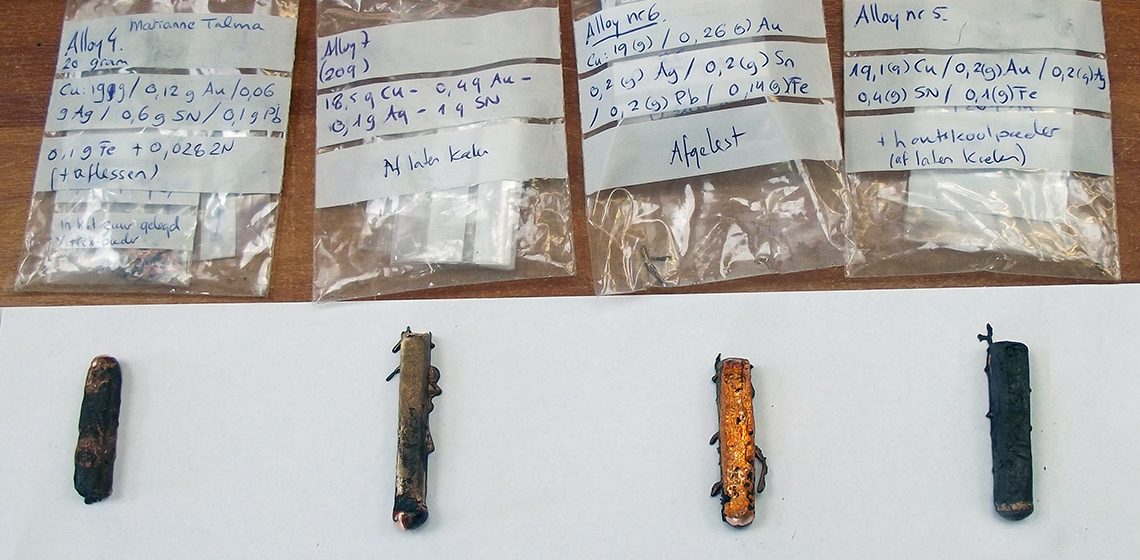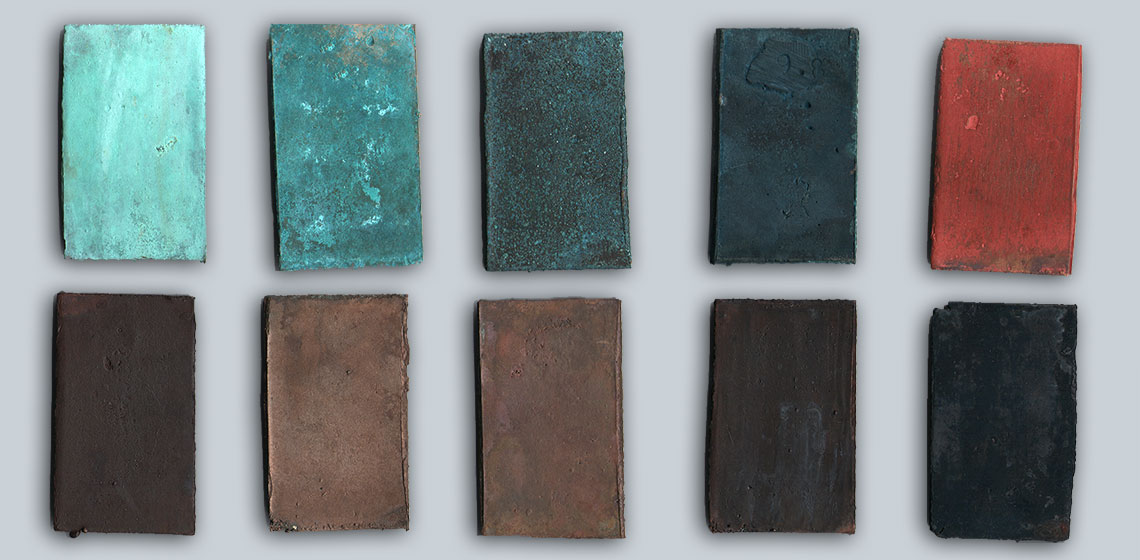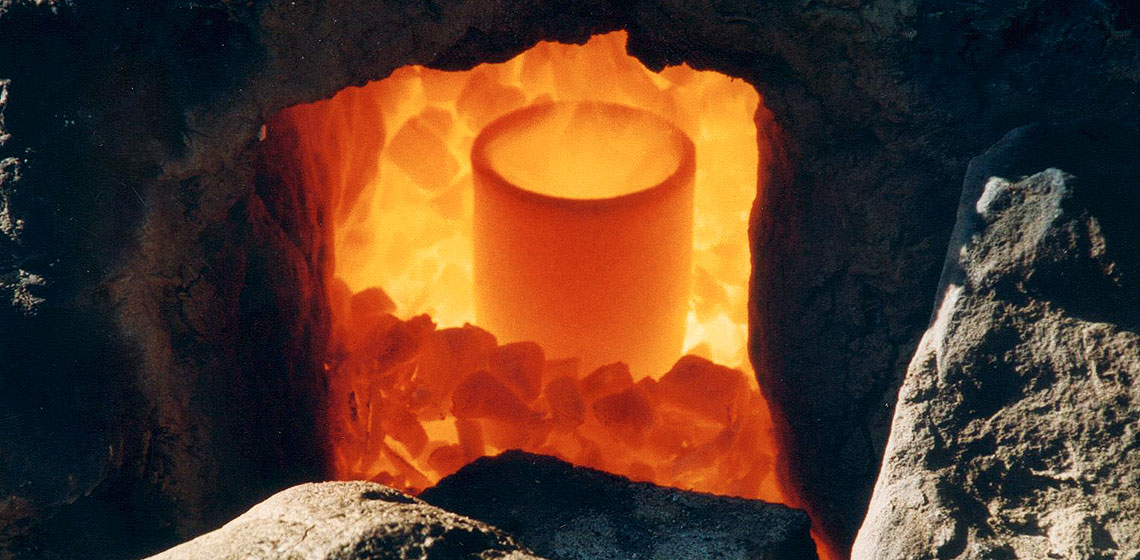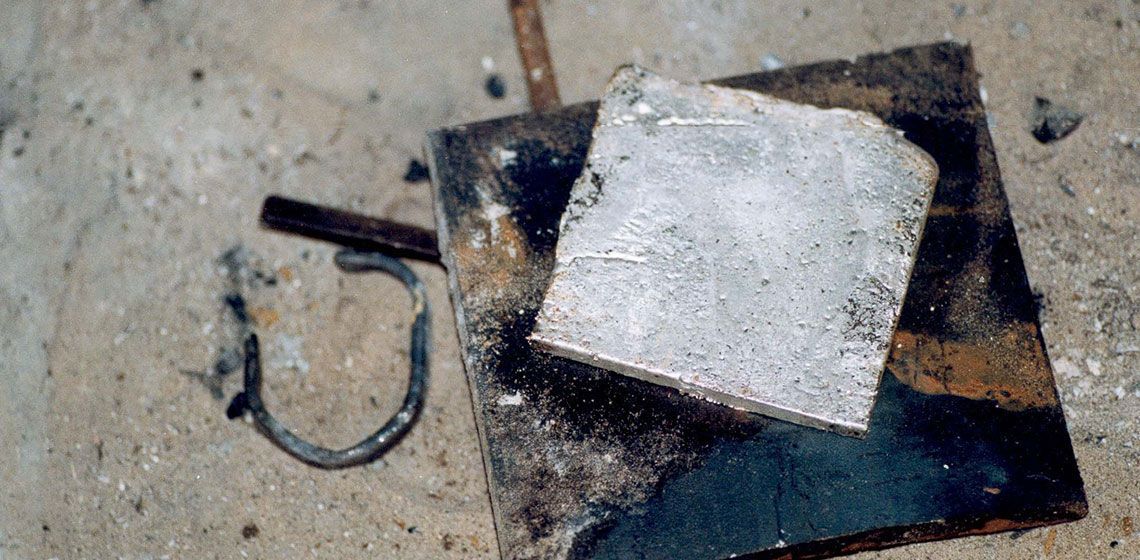metallurgy
An Experimental Diachronic Exploration of Patination Methodology of Dark Patinated (Arsenical) Copper Alloys on Case Studies from the Eastern Mediterranean Bronze Age and Early Iron Age
Publication Date
10th EAC Leiden 2017
***Artificially patinated copper alloys are found archaeologically in polychrome artefacts from the 19th century BC Egypt to historical and contemporary Japan. The unusual colour variations observed in these patinas, ranging from black to blue to purple, is due to a minor amount of gold (Au) and silver (Ag) in their copper matrix, whereas accompanying elements such as tin (Sn), iron (Fe), and arsenic (As) might influence workability, hue or shine.
***Artificially patinated copper alloys are found archaeologically in polychrome artefacts from the 19th century BC Egypt to historical and contemporary Japan. The unusual colour variations observed in these patinas, ranging from black to blue to purple, is due to a minor amount of gold (Au) and silver (Ag) in their copper matrix, whereas accompanying elements such as tin (Sn), iron (Fe), and arsenic (As) might influence workability, hue or shine.
Now we’re Cooking with Gas! How Experimental Archaeology Challenges Modern Assumptions about Metal Recycling
Publication Date
It is accepted knowledge that when re-melting alloys, some of the metal with a lower melting temperature is lost through oxidation, and more metal must be added in order to maintain the desired alloy proportions. In order to understand the changes in alloy content when recycling using Bronze Age technology, experiments were undertaken by the author and others...
The Colour Palette of Antique Bronzes: An Experimental Archaeology Project
Publication Date
Bronze is an alloy of copper and tin, with lead also added. Hellenistic and Roman bronze objects have a variable percentage of metals, and because of this the colour of the alloy will differ depending on the proportions. The colour of the alloy can be maintained by polishing, but it is also possible to give a patina to the surface of bronze using a reagent...
Conference Review: The Metalworker and his Tools: QUB Belfast Conference
Publication Date
A recent conference, funded partially by UISPP, was held in Queens University Belfast. While its main focus was on Bronze Age metalsmithing tools and assemblages, the MeTools conference (23-25 June at Queen’s University, Belfast) had several presentations that focussed on experimental archaeology as a means of exploring metalworking craft...
Montale, the Terramara Lives
Publication Date
OpenArch Special Digest 2015 Issue 2
***Ten years ago, the results of investigations from one of the most important protohistoric settlements of the Po Plain in Italy lead to the construction of a large archaeological park. A project which, today, represents a core reality in the dissemination of experimentations...
***Ten years ago, the results of investigations from one of the most important protohistoric settlements of the Po Plain in Italy lead to the construction of a large archaeological park. A project which, today, represents a core reality in the dissemination of experimentations...
Scandinavian Iron Age and Early Medieval Ceramic Moulds - Lost Wax or Not or Both?
Publication Date
1999 Wilhelminaoord Workshop
***Since the 1940s we have had a discussion in Scandinavia concerning ancient mould-making methods. The question of different methods in the production of ceramic moulds has taken a large part in these discussions; by lost wax or by direct matrix-methods...
***Since the 1940s we have had a discussion in Scandinavia concerning ancient mould-making methods. The question of different methods in the production of ceramic moulds has taken a large part in these discussions; by lost wax or by direct matrix-methods...
Historical Techniques: Cold Gilding
Publication Date
1999 Wilhelminaoord Workshop
***An historal technique of goldplating, described in 18th century literature, was reproduced. This cold-plating technique uses salts of gold, produced by dissolving gold in aqua regia. these salts are then rubbed onto a silver surfaces...
***An historal technique of goldplating, described in 18th century literature, was reproduced. This cold-plating technique uses salts of gold, produced by dissolving gold in aqua regia. these salts are then rubbed onto a silver surfaces...
The Experimental Reconstruction in Bronze of a Merovingian Treasure Box from Sixth Century A.D.
Publication Date
1999 Wilhelminaoord Workshop
***Considerations about a lost ancient fabrication technique of bronze attachements from a merowingian treasure box pointed out that practical experiments had to be done to reconstruct the cast and coldwork. A self made oven and mould sould help to...
***Considerations about a lost ancient fabrication technique of bronze attachements from a merowingian treasure box pointed out that practical experiments had to be done to reconstruct the cast and coldwork. A self made oven and mould sould help to...
From the Object to the Mould: Is there a Connection between Microstructure of a Cast Bronze Object and its Mould Material Used?
Publication Date
1999 Wilhelminaoord Workshop
***The question studied within the framework of the Wilhelminaoord Workshop was: In which way the mould material does influence the cast structure of a bronze object? For this, casts in two different mould materials...
***The question studied within the framework of the Wilhelminaoord Workshop was: In which way the mould material does influence the cast structure of a bronze object? For this, casts in two different mould materials...
Producing Silver Sheet According to Cellini
Publication Date
1999 Wilhelminaoord Workshop
***During a short internship in The Hagues Municipal Museum, I noticed some blisters in a seventeenth century V.O.C.-dish. I thought they were gas bubbles which might have been introduced in the material during coagulation. When hammering to sheet the bubbles would take the shape of blisters which would turn visible during annealing. Why, however, were these shapes not visible on many other pieces?
***During a short internship in The Hagues Municipal Museum, I noticed some blisters in a seventeenth century V.O.C.-dish. I thought they were gas bubbles which might have been introduced in the material during coagulation. When hammering to sheet the bubbles would take the shape of blisters which would turn visible during annealing. Why, however, were these shapes not visible on many other pieces?










